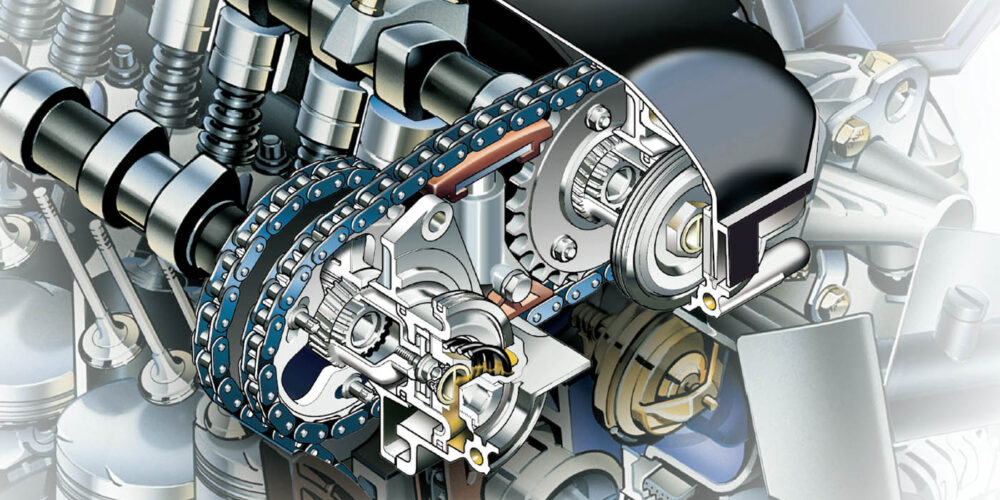By Larry Hammer
Technical Services
www.mightyautoparts.com
With the vehicle on a lift, the tire man invested an hour in a futile attempt to perform a TPM sensor re-learn, following the installation of four new tires. He followed the correct procedure, but the system would default and set diagnostic codes. The vehicle was moved to the parking lot and a dealership technician friend was summoned. This technician performed the exact same sensor learn procedure and the system worked perfectly. Read on, for the ultimate solution.
The direct TPM system utilizes radio and sensor technology to monitor tire pressure levels. Sensors are mounted in each wheel and they monitor the air pressure in the tires and transmit the readings to a receiver positioned in the vehicle. If a tire pressure sensor is replaced, or if the tires have been replaced or rotated, the tire pressure sensors must be put through a learn process or retrained. Once considered an entry-level position in automotive repair, the tire technician just got slam-dunked into the middle of the hi-tech arena.
Maintaining proper tire inflation is imperative in maintaining vehicle control. Vehicle crash statistics involving under-inflated tires are alarming, and this is the reason legislation has been passed requiring vehicle manufacturers to incorporate a low tire pressure monitoring system into their vehicles. With 70% of 2007 vehicles and 100% of all 2008 passenger cars and light trucks under 10K lbs GVW coming equipped with the tire pressure monitoring system, your shop will be dealing with the system daily.
While the TPM system insures that the tires are properly inflated, some of the system quirks can play havoc with the tire technicians. The sensor learn procedure mentioned earlier worked for the dealer technician, due to the vehicle being removed from the metal lift. When parked on a metal floor, lift or alignment rack, the metal can transfer the RF signals, causing the sensor learn procedure to fail.
Numerous system quirks can prevent the TPM system from functioning properly. Let’s consider some circumstances that can result in an erratic TPM system behavior:
TPM Sensor Learn Procedure… When performing a TPM sensor learn procedure, make certain no other sensor learn procedures are being performed simultaneously, or that the tire pressure is not being adjusted on a TPM equipped vehicle within a close proximity. The range of distance that can result in electrical interference varies from 3 to 10 feet, depending on the vehicle manufacturer’s system. The systems are sensitive enough to read tire pressure sensor transmissions from other nearby vehicles while in the train/learn mode. Do not perform the learn procedure until all problems are fixed and the tire pressure in all four tires has been adjusted.
Sensitive System… The TPM system has been optimized for the original equipment tires and wheels. The sensor pressures have been established for a specific tire size and type used on your vehicle. The use of tires with steel body plies in the sidewall (run-flat tires), when the vehicle was not OE equipped with them is not recommended, as it may cause the TPM system to malfunction. System operation may be impaired or damage incurred when using replacement equipment that is not compatible. Aftermarket or custom wheels that are not compatible with the sensors can result in sensor damage or inaccurate sensor readings.
Temperature Sensitive… Tire pressures change in relation to changes in the temperature. If the ambient temperature decreases by 10 degrees F, the tire pressure decreases 1 psi. If you encounter asignificant decrease in temperature, it could reduce the tire pressure below the TPM sensor set point. If the tire pressures are not adjusted at cold temperature, the tire pressure may drop enough to be detected by the TPM system, which will activate the low pressure warning light. If the tires have been subjected to use, or exposed to direct sunlight, move the vehicle into a shaded position and allow the tires to cool before checking and adjusting the pressures.
Radio Frequency Interference… RFI noise is generated by the electrical system, including components such as an electric motor or an accessory operation. Cellular telephones and remote transmitters, power inverters and portable entertainment equipment can generate RFI, affecting the operation of the TPM system.
Poor Sensor Reception… Nissan cautions that no metal film or any metal parts should be placed on the windows, as it may cause poor reception of the tire pressure sensor’s signals, resulting in an improper TPM system operation. Mazda cautions that their system may not function properly under the following conditions: 1) If electrical equipment or a device near the vehicle shares the same frequency as the tire pressure sensors. 2) If a metallic object is placed near the center of the dash or a large metallic object is placed in the right rear seat, it may block RF signals from the tire pressure sensors to the receiver unit. 3) Using a digital device such as a personal computer or a current converter device that can cause an RFI condition with the receiver unit. 4) If excess snow or ice accumulates, especially around the wheels. 5) When tires with steel reinforcement in the sidewalls are installed. 6) If tire chains are used.
The TPM system will pose many challenges. Make certain that you have the proper service information, training, and the necessary TPM system learn procedures.
For information on Mighty Auto Parts, visit www.mightyautoparts.com.








